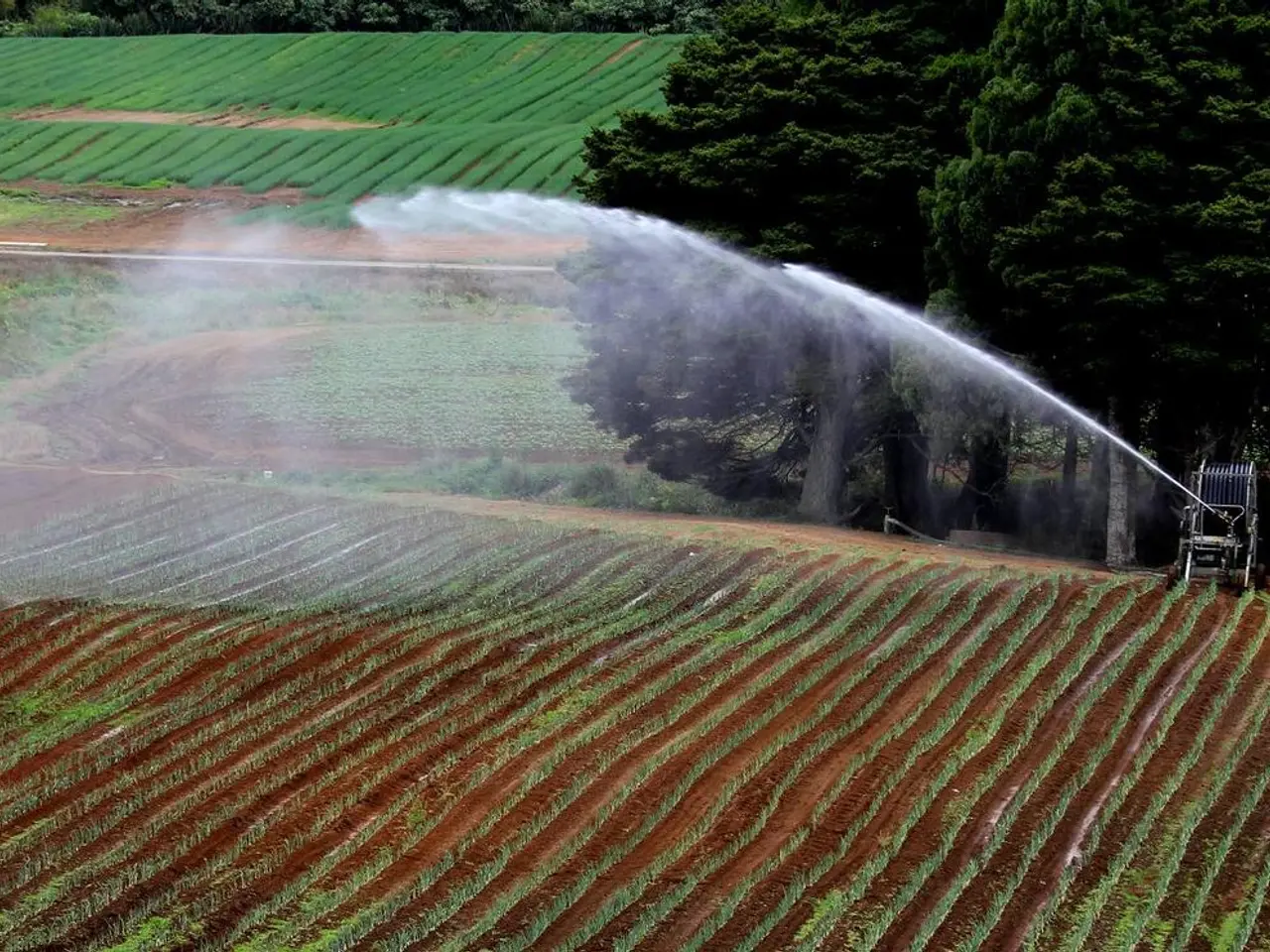Aviation phenomenon: The enigma of green circles observed during flights.
In the vast expanses of agricultural land across the world, circular fields can be seen from plane flights over the American heartland. These fields, known as crop circles, are not a result of extraterrestrial activity, but rather, a testament to the advancement of modern farming techniques. At the heart of each crop circle lies a system called central pivot irrigation, a method that has transformed the agricultural industry.
Crop circles are designed for growing various types of crops, and central pivot irrigation plays a crucial role in this process. This irrigation system ensures that all plants within a crop circle receive equal amounts of water, thanks to the steel arm that extends from the pivot point, reaching the full radius. Sprinklers are placed at even intervals along this arm, delivering water in a precise manner that minimizes water evaporation compared to traditional flood irrigation.
One of the primary advantages of central pivot irrigation is its water and resource efficiency. Central pivots apply water more precisely using rotating sprinklers that can be adjusted for crop type, growth stage, and weather conditions. This reduces water loss from evaporation and runoff compared to flood irrigation, which saturates the entire field indiscriminately. For example, sprinklers on pivots can be lowered closer to low-growing crops to minimize wind drift and evaporation.
Labor and operational efficiency are also significant benefits of central pivot irrigation. These systems operate automatically on pre-set schedules, significantly reducing the manual labor needed to move and manage water flow, unlike flood irrigation which requires considerable manual effort to divert and control water across fields.
With better water control, farmers can cultivate diverse and water-intensive crops—such as alfalfa, corn, potatoes, and bananas—more sustainably and with higher yields than flood irrigation allows. The pivot’s flexibility in water application supports crop rotation and market-driven planting decisions, enhancing economic returns.
Soil erosion and health are also improved with sprinkler-based systems like central pivots. Compared to flood irrigation, which often causes waterlogging and erosion through uncontrolled surface flow, central pivot irrigation reduces soil erosion significantly.
In summary, central pivot irrigation systems deliver higher irrigation efficiency by conserving water, reducing labor, enabling diverse crop production, and minimizing soil damage. They are more sustainable and profitable compared to traditional flood irrigation, which tends to be less precise, more labor-intensive, and less efficient in water use, leading to greater resource waste and limited crop options. Without central pivot irrigation, the food supply could look significantly different.
Technology plays a pivotal role in the precise water distribution of central pivot irrigation, with sprinklers being adjusted for crop type, growth stage, and weather conditions. The steel arm extending from the pivot point is an embodiment of modern engineering, delivering water efficiently to minimize evaporation and enhance crop growth.




